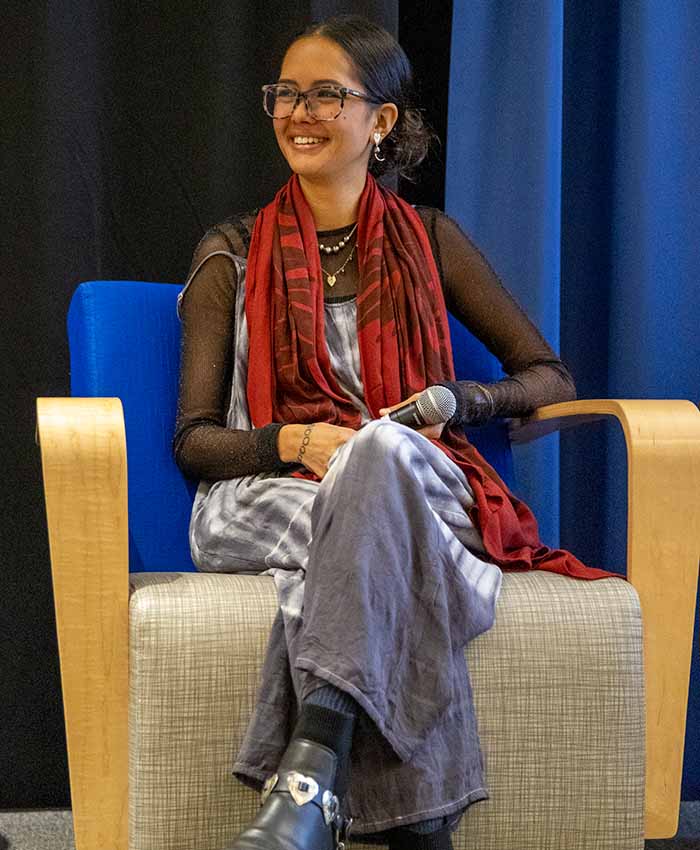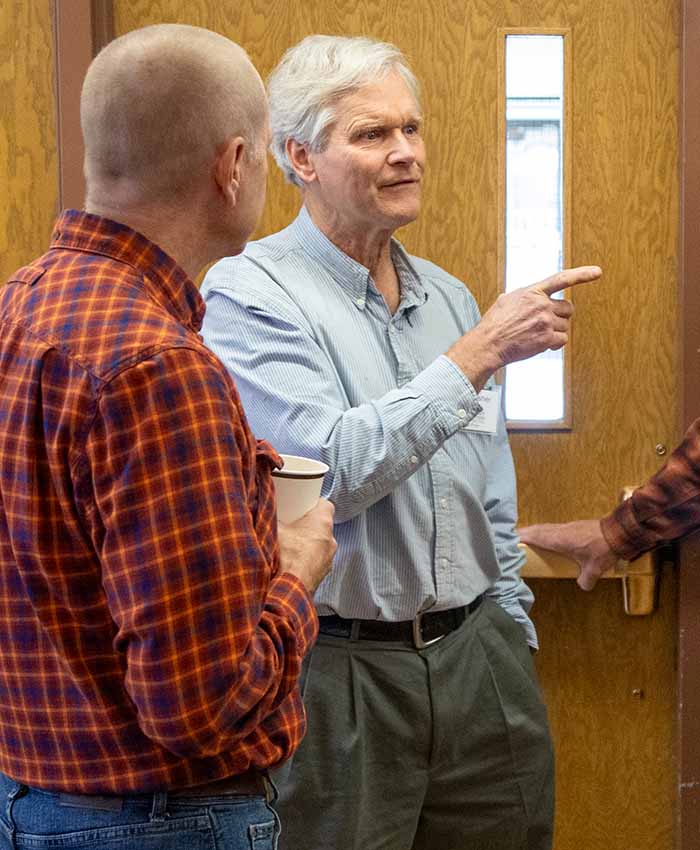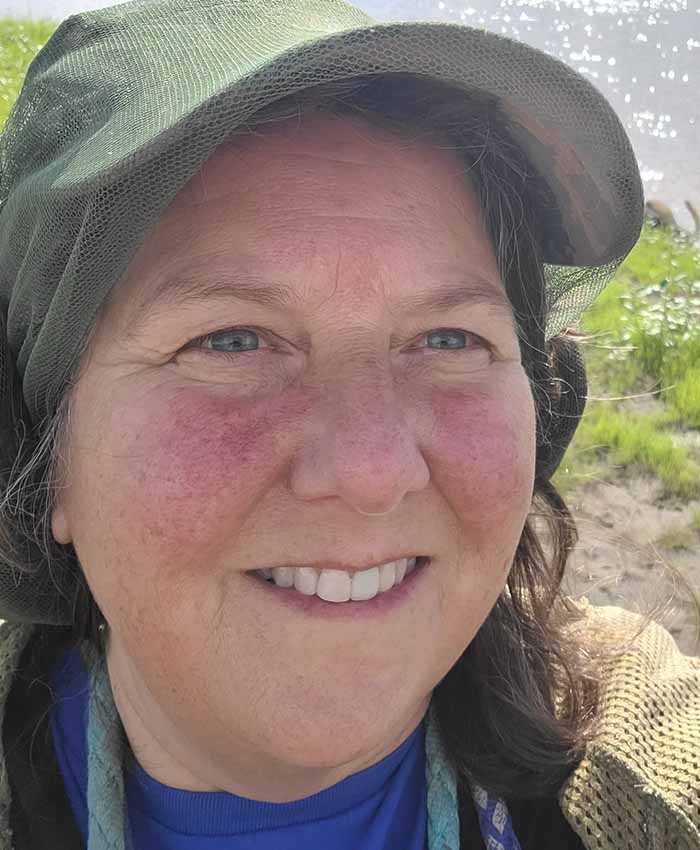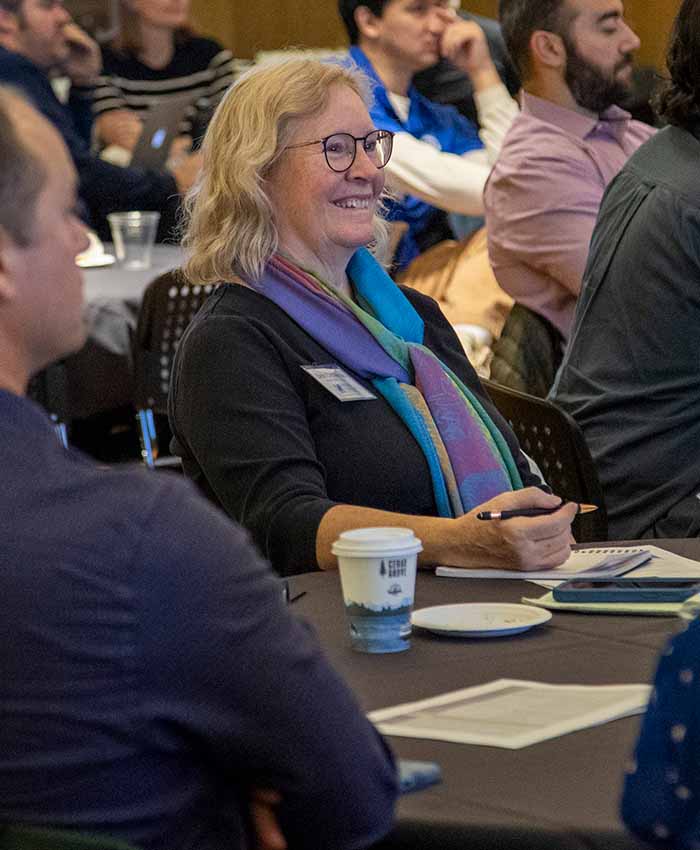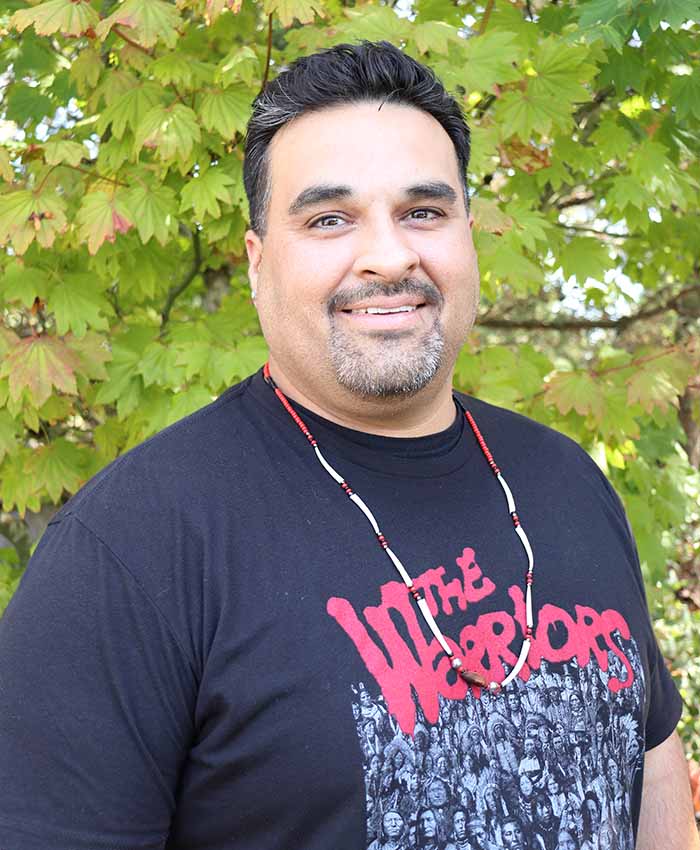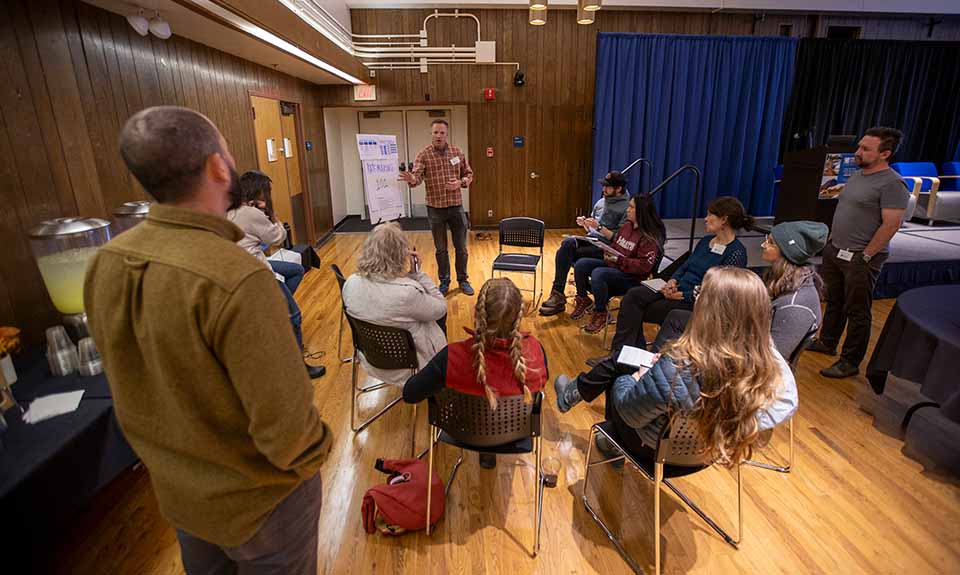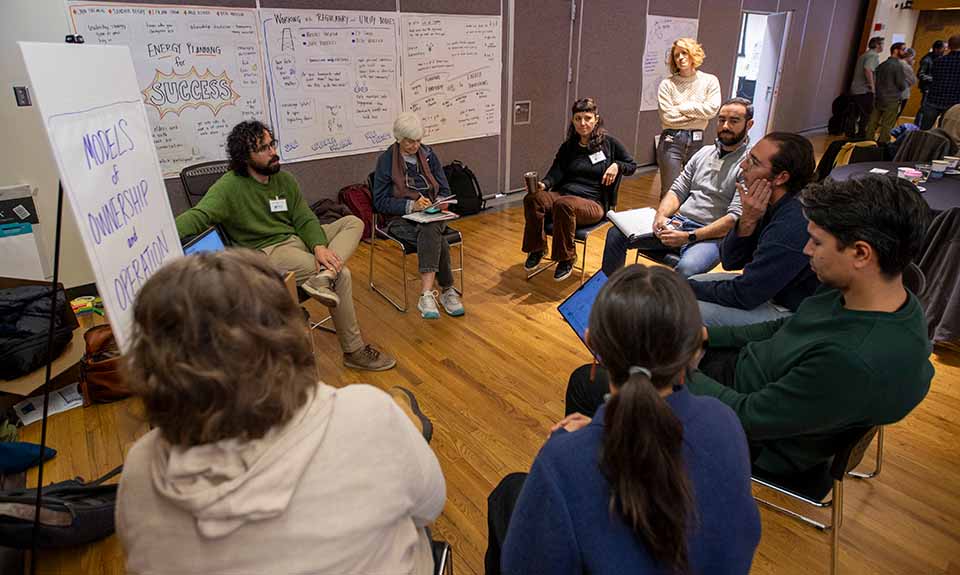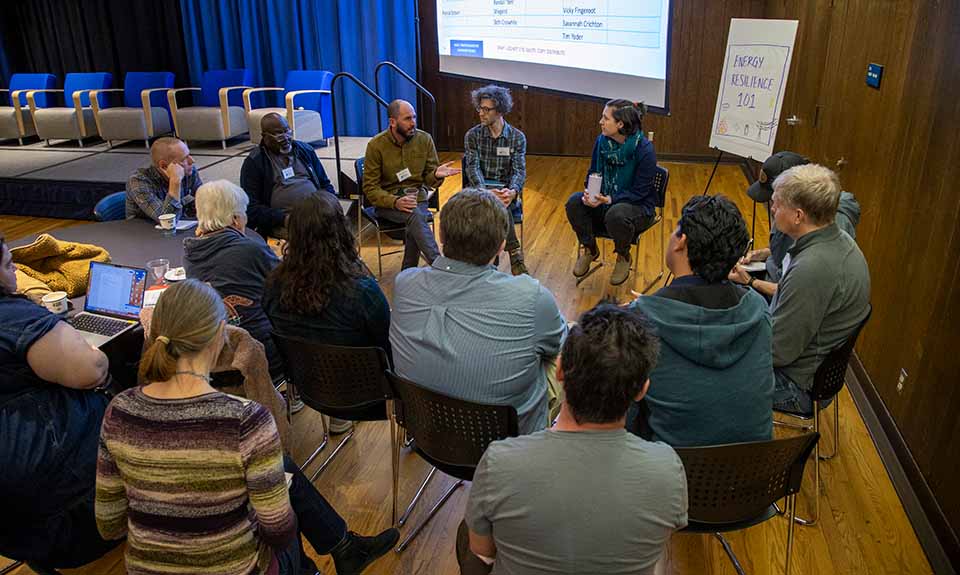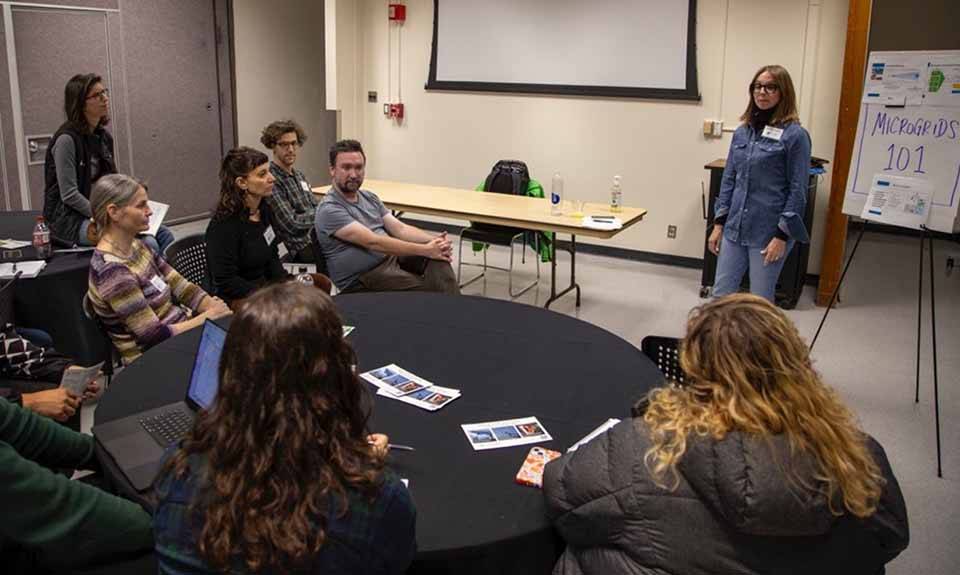The Energy Technology Innovation Partnership Project (ETIPP), a U.S. Department of Energy (DOE) technical assistance program managed by NREL, expanded its support to build resilience in coastal, island, and remote communities and grew its partner network during Fiscal Year 2024.
Fiscal Year 2024 Program Highlights
In Fiscal Year 2024, ETIPP saw its most rapid growth to date and achieved several key milestones:
ETIPP welcomed 25 new communities in its fourth cohort—nearly doubling the total number of communities in the program.
ETIPP awarded $50,000 to each Cohort 4 community to expand assistance for energy activities including hiring staff, incentivizing stakeholder participation in energy planning, and other activities to support local energy goals.
Four new regional partner organizations joined the ETIPP network to support the growing number of communities.
ETIPP added two new eligible regions, expanding its support to eight regions total.
The program began offering two tracks for projects: strategic energy planning and deep-dive technical assistance.
ETIPP launched a knowledge-sharing network to house valuable resources for communities and partners within and outside the program.
Read on to learn more about these achievements.
Community Impacts
In Fiscal Year 2024, ETIPP grew its support to 57 communities with the addition of 25 new communities in its fourth cohort. Through the support of ETIPP's regional partner organizations, the program's reach extended well beyond communities the program directly supported, with outcomes that spanned community engagement to energy projects. While not captured in the statistics below, ETIPP is also starting to understand the impact of its programming on local economic development and job creation related to energy, including three jobs that were created across ETIPP communities in Fiscal Year 2024. Additional job creation stemming from ETIPP support is expected in Fiscal Year 2025 and beyond.
105
Communities engaged through ETIPP
865
Individuals engaged through ETIPP
16
States or territories where ETIPP communities are located
20,840
Kilowatts of planned energy generation resulting from ETIPP technical assistance
Learn more about the metrics in this report.
Local Insights
Members of ETIPP communities across the country shared thoughts on the program's impacts on their energy plans.
Exploring Energy Strategies
ETIPP communities are assessing, planning for, and implementing dozens of technologies and strategies to improve the affordability, reliability, and security of their energy systems. The following categories are represented in ongoing scopes of work with communities, community proposed projects, or ongoing projects that ETIPP is supporting.
ETIPP activities can be broken into four broad categories: generation, transmission and distribution, energy efficiency and electrification, and regulation. Generation projects include exploring energy technologies such as battery storage, hydropower, geothermal, solar, wind, biodigesters, small modular nuclear, or hydrogen production; transmission and distribution projects include exploring microgrids, grid controls, or transformer capacity; energy efficiency and electrification includes projects focusing on buildings efficiency, equipment upgrades, or transportation electrification; and regulation includes projects exploring rate and tariff structures.
Financial Impacts
In addition to ETIPP's traditional in-kind technical assistance, for the first time in the program's history, ETIPP awarded $50,000 in direct funding to each community accepted in Fiscal Year 2024. But the financial benefits of ETIPP assistance extended to other communities in ETIPP's first three cohorts through the support of its partner network.
13
Competitive funding opportunities awarded as a result of ETIPP support
$8.56M
Dollars competitively awarded to ETIPP communities as a result of ETIPP support
Learn more about these metrics.
ETIPP support helped communities apply for and receive funding to pursue their energy goals. And because of activities supported through ETIPP—including improving energy resilience, which avoids outages and related revenue loss; upgrading power systems; bolstering energy efficiency projects; and engaging in new energy generation projects—ETIPP also saved communities money in Fiscal Year 2024.
Network Expansion
ETIPP's partnership model—from grassroots engagement at the community level, to regional bridging organizations, to federal support—is the underpinning for the program's success. And program improvements at the federal, regional, and local levels helped ETIPP grow during Fiscal Year 2024.
63
Partnerships formed between ETIPP communities and external entities
56
Capacity-building/knowledge-sharing events held
Learn more about the metrics in this report.
U.S. Department of Energy
DOE provides funding and support for ETIPP, as it has since Fiscal Year 2020, to develop more affordable, reliable, and secure energy systems throughout the country.
Regional Partners
ETIPP's regional partner organizations are the bridges between local communities and the national laboratory complex. These organizations help support communities before, during, and after their ETIPP projects through education, training, outreach, and other activities that cultivate strong relationships with local community members.
Since its inception, ETIPP has partnered with organizations in Alaska, Hawaii, the Northeastern Seaboard, Pacific Northwest, and Southeastern Seaboard. In Fiscal Year 2023, ETIPP began exploring ways to reach communities along the Gulf Coast. This effort continued in Fiscal Year 2024, when the program released a request for proposals to recruit regional partner organizations across the country, including the Great Lakes and Gulf Coast regions. ETIPP brought on four new regional partners to support communities in the Southeast, Great Lakes, and Gulf Coast regions in Fiscal Year 2024 and looks forward to welcoming partners to support communities in the Caribbean and Pacific territories in Fiscal Year 2025.
New Regional Partners
Learn more about ETIPP's newest regional partners that joined the program in Fiscal Year 2024.
Slipstream is a nonprofit organization with more than 40 years of experience delivering energy engineering, planning, financing, research, and education across the Great Lakes region. Slipstream designs, tests, and implements cutting-edge energy efficiency and generation programs that propel the region toward a resilient energy future.
Joining ETIPP aligned with Slipstream’s mission to enhance energy resilience. Through the ETIPP regional partner network, Slipstream seeks to collaborate with communities to design and implement resilient, locally tailored energy solutions that advance access to energy benefits.
“Our ultimate goal is to witness meaningful lasting improvements in these communities post-ETIPP engagement, with robust documentation of the program’s positive impact to inspire further progress,” said Doug Ahl, Slipstream principal for Tribal partner innovation."

Catherine Mercier-Baggett of the Southeast Sustainability Directors Network takes notes at the ETIPP annual meeting. Photo by Taylor Mankle
The Southeast Sustainability Directors Network is one of two organizations supporting communities along the Gulf Coast. Southeast Sustainability Directors Network is a network of local governments across 10 states in the Southeast committed to the implementation of resilient energy solutions. The organization works to accelerate and scale implementation of best practices by collaborating with local government staff to solve problems, innovate, and support decision-making.
“We see ETIPP not only as a unique opportunity to connect individual communities to technical assistance … but also as a catalyst to generate wider change toward comprehensive resilience in the Gulf,” said Jake Leech, Gulf Coast energy manager for Southeast Sustainability Directors Network. “As we continue on this exciting journey, we hope to continue to forge a broader regional community of resilience practitioners to work side by side to solve our common energy challenges.”
STEM NOLA’s mission is to expose, engage, and inspire future innovators, creators, makers, and entrepreneurs, grades K-12, through STEM-based activities and to opportunities in the fields of science, technology, engineering, and math (STEM). The organization was drawn to ETIPP because of its commitment to advancing resilient energy and creating opportunities for communities to engage in energy and STEM-related projects. Partnering with ETIPP aligns with STEM NOLA’s mission to connect students and the community to real-world applications that shape their futures.
“We hope through our partnership with ETIPP we can integrate energy literacy … into our programs, inspiring students to envision [energy] careers,” said Chelsea Fobbs, contracts and grants coordinator for STEM NOLA.
STEM NOLA and Southeast Sustainability Directors Network will work together to serve ETIPP communities along the Gulf Coast.
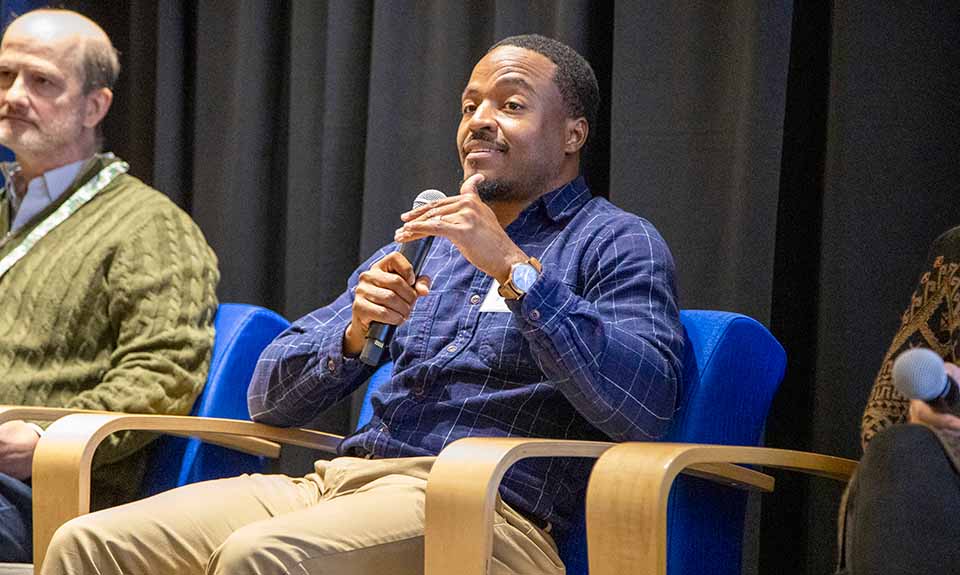
Groundswell’s John Roberts Jr. speaks at the ETIPP annual meeting. Photo by Taylor Mankle
Groundswell has a growing presence in the Southeast region. Headquartered in Virginia, Groundswell has served communities in North Carolina and Georgia, and has laid the groundwork to deploy community solar and energy storage across Alabama, Arkansas, North Central Florida, Georgia, Mississippi, North Carolina, South Carolina, and Virginia in the coming years through its Southeast Rural Power program.
“As we expand our energy resilience work across the region, ETIPP was a natural fit,” said John Roberts Jr., Southeast community resilience program manager for Groundswell. “We hope to play a major role in supporting the energy needs of coastal communities in the Southeast region and advancing the strategic plans, projects, and goals that these communities aspire to accomplish. We also are excited to collaborate with the other regional partner organizations across the country by learning from each other and pushing this work forward.”
Legacy Regional Partners
Three of ETIPP’s regional partner organizations have been integral members of the program for several years. Read about how ETIPP’s longtime partners continued their support for communities in Alaska, the Northeast, and the Pacific Northwest in Fiscal Year 2024.
Since 2021, the nonprofit Renewable Energy Alaska Project (REAP) has partnered with ETIPP to provide support across Alaska, where ETIPP has directly partnered with 14 communities since its inception. The organization aims to facilitate the increased development of energy generation and efficiency in Alaska through collaboration, education, training, and advocacy.
During Fiscal Year 2024, REAP engaged an estimated 500 individuals and 44 communities through ETIPP and hosted or participated in 18 events to provide education about and build capacity around energy in Alaska. And with the organization's support in Fiscal Year 2024, ETIPP's Alaska communities were awarded $4.25 million, including:
- $50,000 to the City of McGrath, Alaska, to supply funding for a certified home energy auditor, provide NREL and REAP staff to train three local residents on home energy audits, conduct 25 individual home energy audits, and give an energy efficiency presentation to the community
- $1 million to Nikolski, Alaska, for a solar and storage project
- $1.7 million to Igiugig, Alaska, for a 200-kilowatt solar project.
ETIPP's regional partner for the Pacific Northwest, Spark Northwest, partners with communities to build resilient energy futures. Spark Northwest has been part of the program since 2022.
Spark Northwest engaged 93 individuals and 22 communities through ETIPP in Fiscal Year 2024, including eight ETIPP communities across Washington, Oregon, and Idaho. With the support of Spark Northwest, ETIPP communities in the Pacific Northwest secured $3.91 million in funding during Fiscal Year 2024, including:
- $3.32 million for the Makah Tribe in Neah Bay, Washington, which includes:
- $1.5 million for solar plus storage implementation for the Tribe's Head Start building
- $620,000 to install solar panels on the community gym
- $1.2 million for electric vehicle charging
- A $389,200 grant for the Port Gamble S'Klallam Tribe in Kingston, Washington, to install a solar and energy storage system at a community health center.
The Island Institute has partnered with ETIPP since 2021 to support communities in the Northeastern United States. While the Island Institute's priorities include strengthening the marine economy and communities in Maine, the organization has supported 15 ETIPP communities stretching from New York to Massachusetts and Maine to Lake Michigan.
In Fiscal Year 2024, the Island Institute engaged 122 individuals across 19 communities. It held 25 knowledge sharing or capacity building events, as well as hosted a training for ETIPP partners in Bar Harbor, Maine.
ETIPP communities in the Northeast and the Island Institute were awarded $400,000 in Fiscal Year 2024 from state and federal grants for ETIPP-supported projects. These awards included:
- Deer Isle and Stonington, Maine, each received $100,000 grants for microgrid projects. The microgrid in Stonington will be at a community hub that has health, human, and economic services, and the microgrid in Deer Isle will be at the town office.
- The Island Institute was awarded $200,000 in Phase 2 of the U.S. Department of Energy's Energizing Rural Communities Prize.
Regional Partner Perspectives
Partners responded to the question: What ETIPP accomplishments from Fiscal Year 2024 make you most proud?
National Laboratories
Four national laboratories provide technical expertise tailored to each community's energy goals through ETIPP. To better meet communities where they are, ETIPP began offering two distinct tracks for communities accepted to the program in Fiscal Year 2024: strategic energy planning for communities in the early stages of their energy plans, and in-depth technical assistance.
27
New tools or resources developed in response to community needs
Learn more about the metrics in this report.
Through hands-on work with communities, energy experts at ETIPP's national laboratories have developed tailored tools and resources to support technical assistance projects. These include rural energy best practices, community energy websites, open-source power system models, heat recovery system redesign options, energy generation and storage analyses, energy and economic performance and feasibility models, fact sheets, resilience reports, and other resources. And to serve communities within and beyond ETIPP, the program also developed a Knowledge-Sharing Network, which compiles resources, technical tools, and guidance documents that have been used by the program's laboratories, partners, and communities in ETIPP projects.
Learn more about each national laboratory's capabilities and ETIPP focus areas below.
A Message From Leadership
Caroline McGregor, energy access program manager, U.S. Department of Energy
Tessa Greco, ETIPP program manager, NREL
Download Fiscal Year 2024 ETIPP
Metrics Definitions and Methodology
Share
Last Updated Nov. 10, 2025

